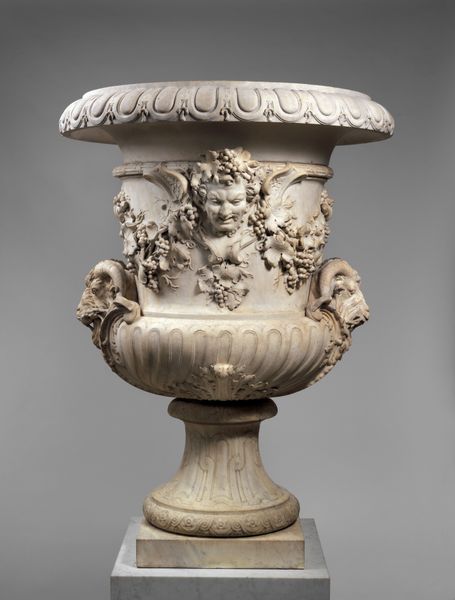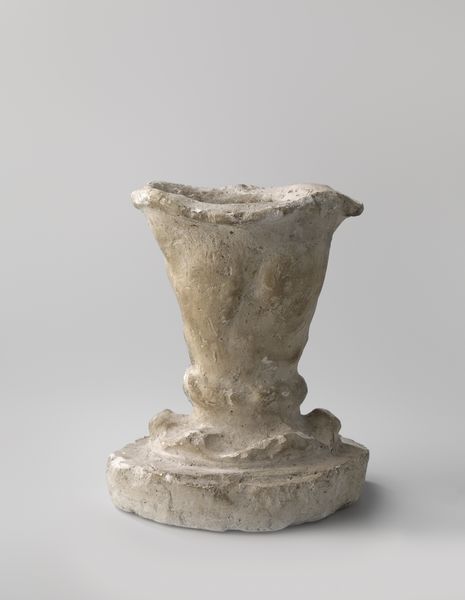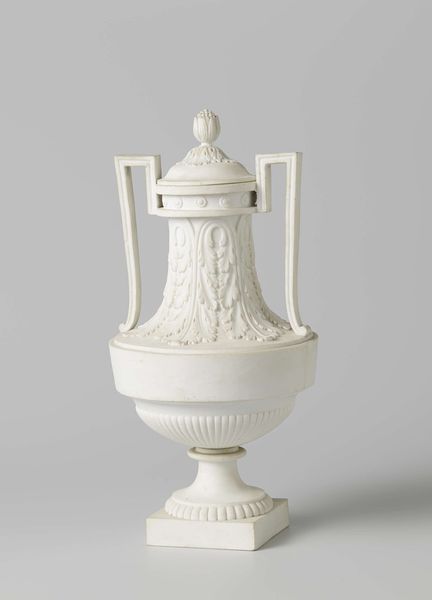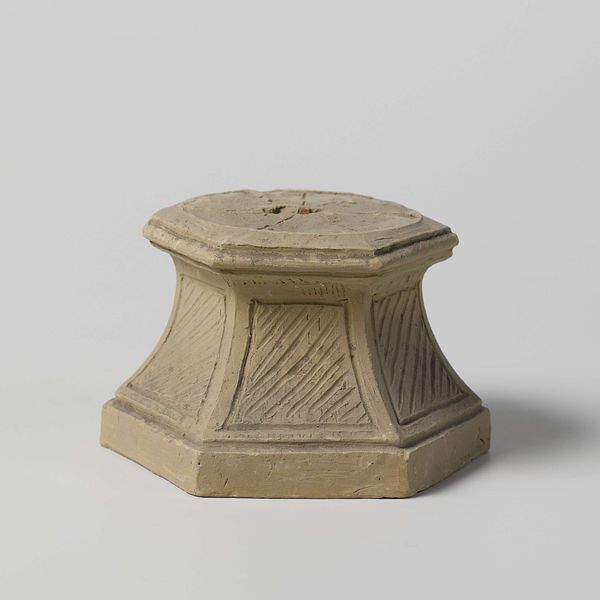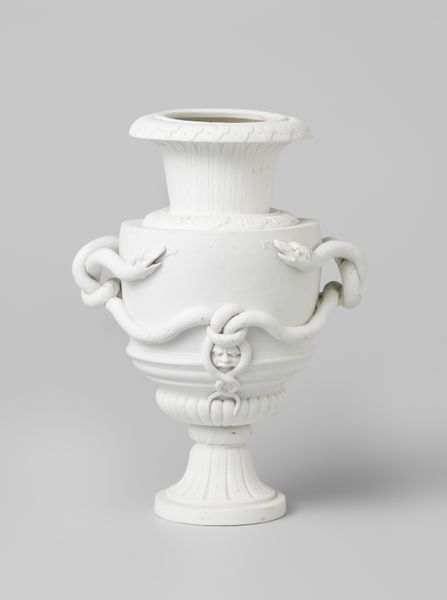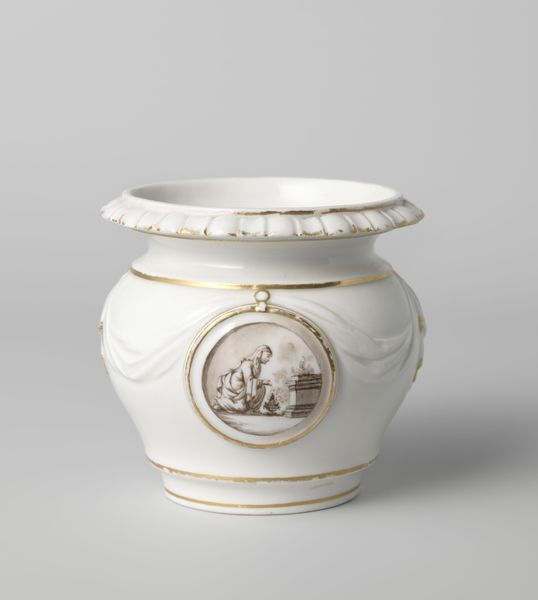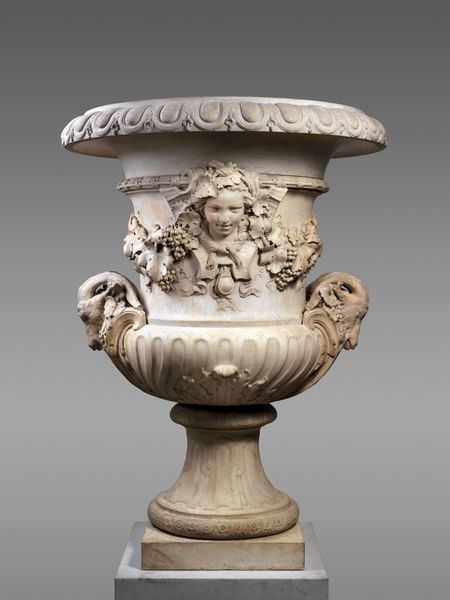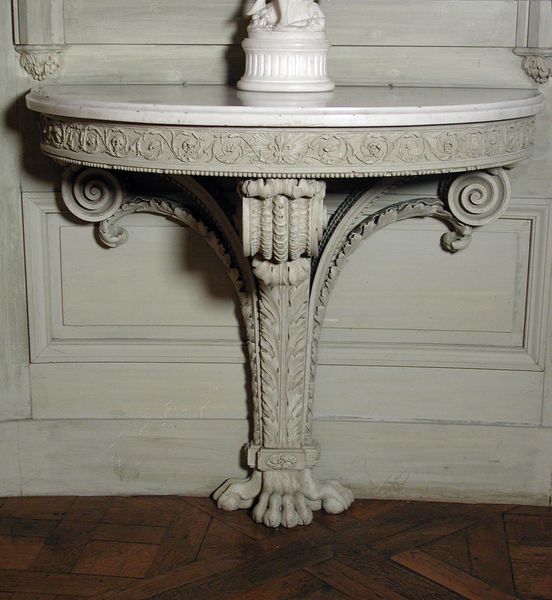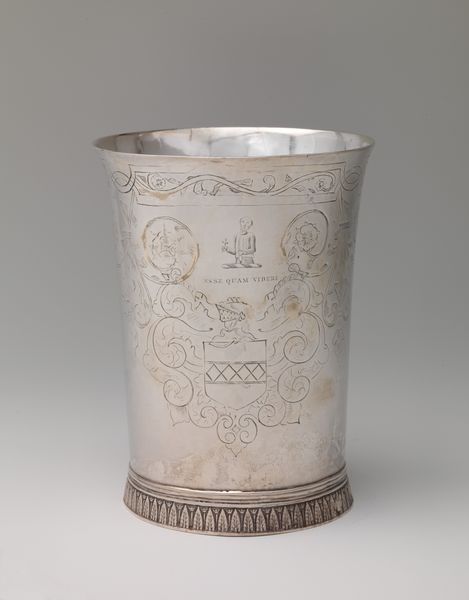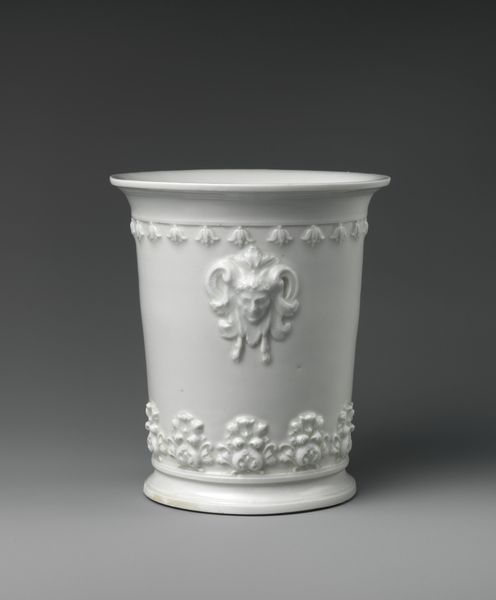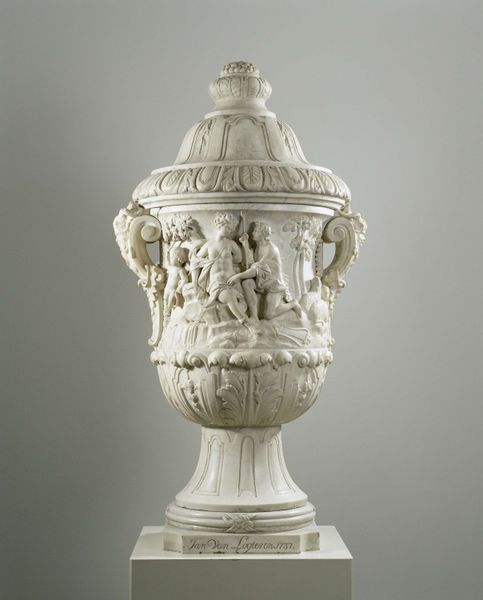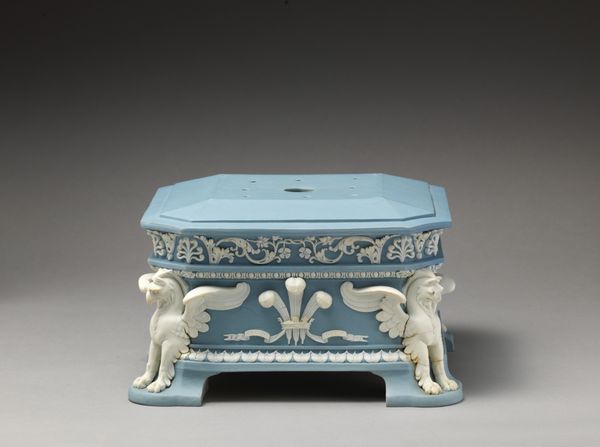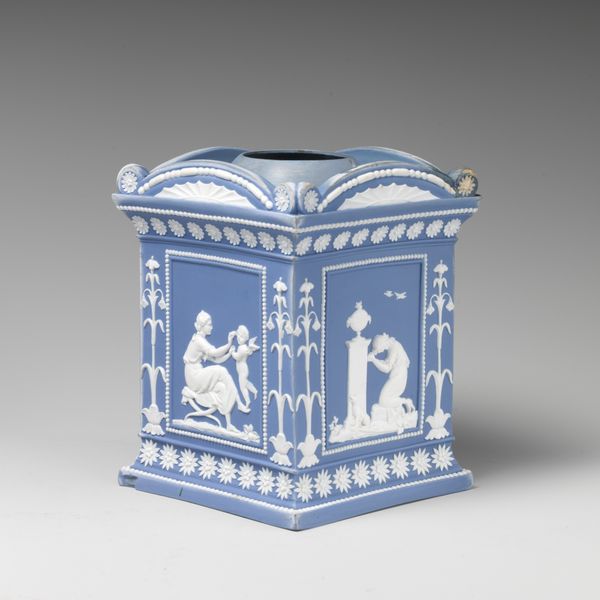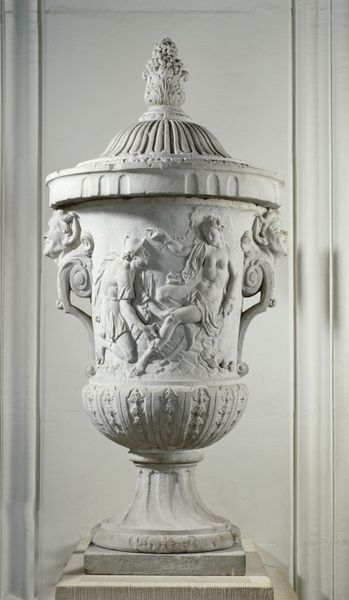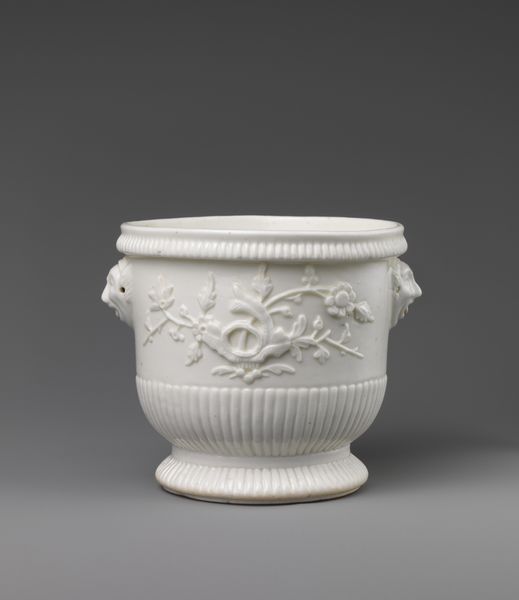
sculpture, marble
#
neoclacissism
#
sculpture
#
form
#
sculpture
#
decorative-art
#
marble
Dimensions: overall: 94.62 × 202.25 × 151.45 cm (37 1/4 × 79 5/8 × 59 5/8 in.) gross weight (approximate): 453.597 kg (1000 lb.)
Copyright: National Gallery of Art: CC0 1.0
Curator: Thomas Hope's marble pedestal, likely dating from 1822-1823, presents an intriguing study in Neoclassical form. What are your first impressions? Editor: Well, it's a striking exercise in understated power, isn’t it? The stark, round marble has an austere elegance; yet, the patina lends an almost spectral quality. Curator: Indeed. Consider the unadorned cylindrical shape—it is pure geometry. Hope brilliantly juxtaposes this simplicity with the intricate friezes at the base and top. Notice the Greek key pattern near the floor and the garland motif near the top of the pedestal. Editor: Precisely! The meander, or Greek key, instantly evokes labyrinthine stories and journeys, both literal and metaphorical. The garland introduces ideas of sacrifice and celebration; it implies a deity, wouldn't you say? I imagine it holding a sculpture of Venus. Curator: Yes, exactly. The piece is titled "Pedestal for 'Venus' after Canova". In it, we find Hope showcasing the influence of ancient Greece on Neoclassical design through meticulous detail. I'm especially captivated by how he manages to instill a sense of depth and motion using very shallow reliefs. Editor: I am interested in the cultural memory embedded in these classical forms, specifically how the Venus, usually presented nude, is related to ideas about desire. And what is she resting on? The pedestal, it serves as her silent partner. Curator: Certainly, it functions as more than a mere object; it elevates the Venus, both literally and conceptually. It directs the gaze, orchestrating the visual experience and intensifying our awareness of form and ideal proportion. Editor: By framing Canova’s Venus, it reinforces enduring cultural ideals and beliefs and reminds the viewer of stories passed down through art, myth and time. The Venus becomes more significant when paired with the pedestal because we give it more gravitas, or significance. Curator: A beautiful reminder that form and symbolism work best in synthesis. It brings Hope’s intentions into much sharper focus. Editor: It leaves you pondering the complex relationships between form, symbol, and the stories they help convey.
Comments
No comments
Be the first to comment and join the conversation on the ultimate creative platform.
